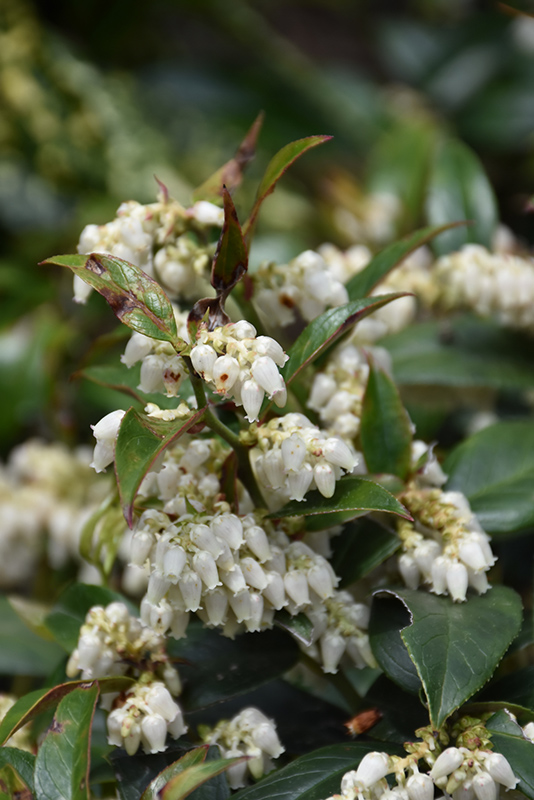>> Home
Rollison Fetterbush
Leucothoe fontanesiana 'Rollisonii'
Height: 6 feet
Spread: 6 feet
Sunlight:
![]()
![]()
Hardiness Zone: 4b
Other Names: Mountain Doghobble, Dog Hobble
Brand: Monrovia
Description:
Originating in the eastern mountain sun-dappled ravines, this lovely colonizing shrub blooms prolificly in spring with drooping racemes of white bell flowers; dark glossy green foliage makes it a handsome tall groundcover
Ornamental Features
Rollison Fetterbush features showy racemes of fragrant white bell-shaped flowers hanging below the branches from late spring to early summer. It has attractive dark green evergreen foliage which emerges red in spring. The glossy pointy leaves are highly ornamental and turn burgundy in the fall, which persists throughout the winter. The red branches add an interesting dimension to the landscape.
Landscape Attributes
Rollison Fetterbush is a multi-stemmed evergreen shrub with a shapely form and gracefully arching branches. Its average texture blends into the landscape, but can be balanced by one or two finer or coarser trees or shrubs for an effective composition.
This is a high maintenance shrub that will require regular care and upkeep, and is best pruned in late winter once the threat of extreme cold has passed. Gardeners should be aware of the following characteristic(s) that may warrant special consideration;
- Suckering
Rollison Fetterbush is recommended for the following landscape applications;
- General Garden Use
- Groundcover
- Naturalizing And Woodland Gardens
Planting & Growing
Rollison Fetterbush will grow to be about 6 feet tall at maturity, with a spread of 6 feet. It has a low canopy, and is suitable for planting under power lines. It grows at a medium rate, and under ideal conditions can be expected to live for 40 years or more.
This shrub does best in partial shade to shade. It does best in average to evenly moist conditions, but will not tolerate standing water. It is not particular as to soil type, but has a definite preference for acidic soils. It is somewhat tolerant of urban pollution, and will benefit from being planted in a relatively sheltered location. Consider applying a thick mulch around the root zone in winter to protect it in exposed locations or colder microclimates. This is a selection of a native North American species.
